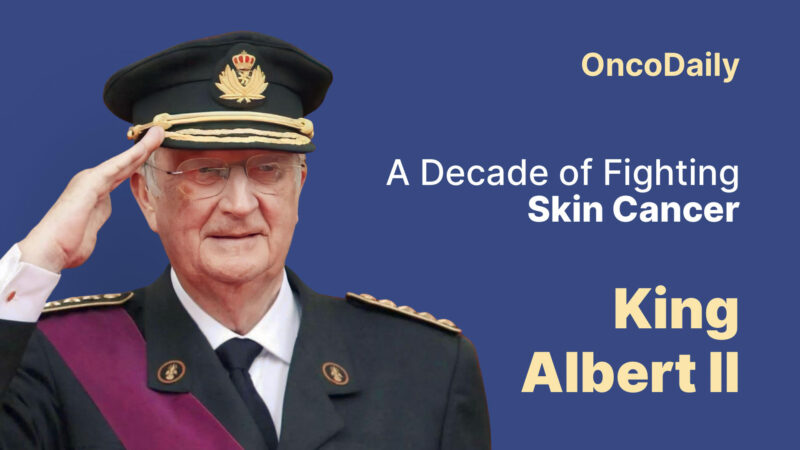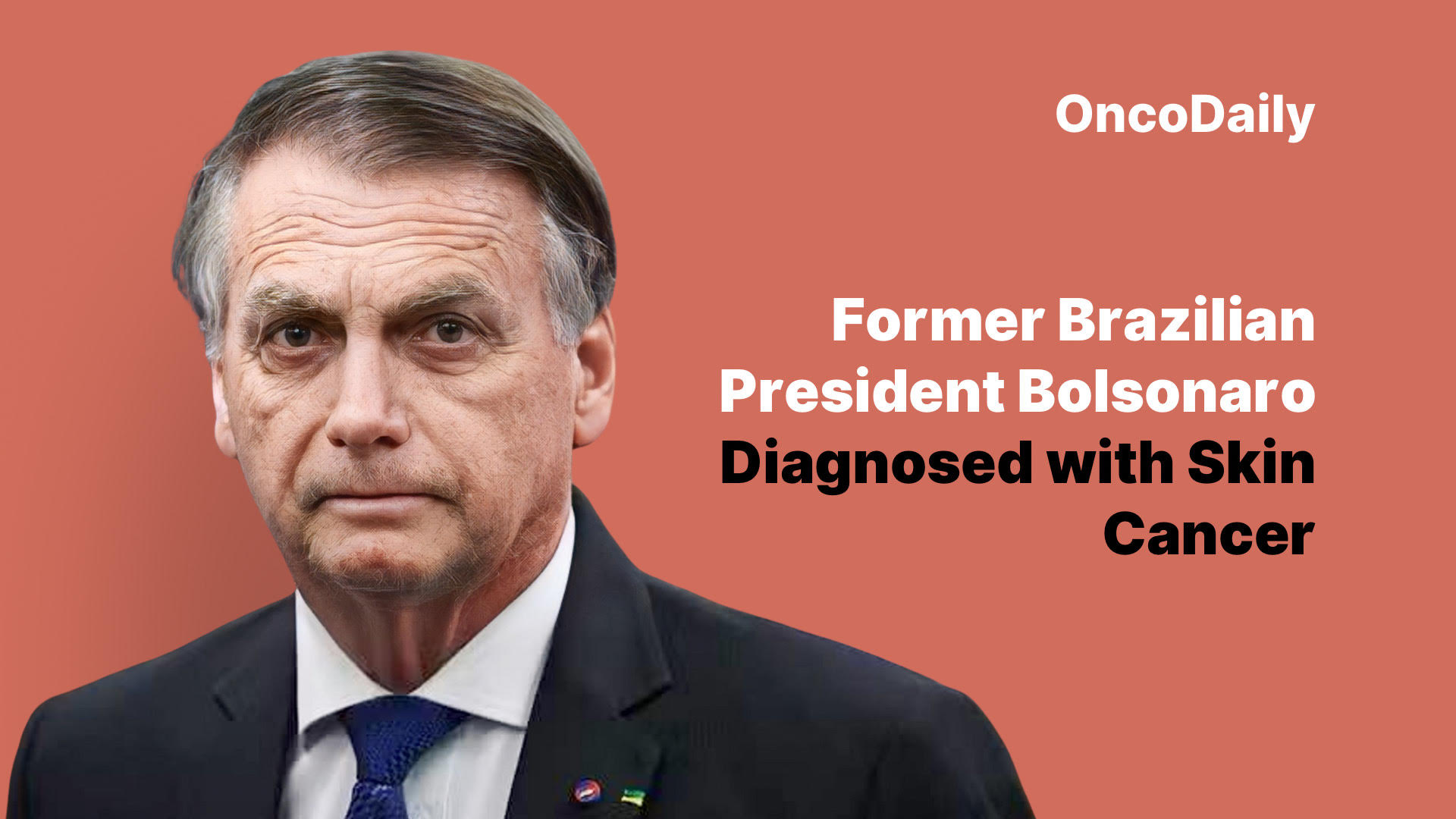Jair Messias Bolsonaro, born March 21, 1955, is a Brazilian politician and former military officer who served as the 38th president of Brazil from 2019 to 2023. Known for his right-wing populist views, Bolsonaro’s presidency was marked by controversial policies on the environment, Indigenous rights, and his response to the COVID-19 pandemic. After narrowly losing re-election in 2022, Bolsonaro faced legal troubles, including a conviction linked to planning a coup attempt, resulting in his house arrest in 2025.

Photo: Depositphotos
In September 2025, Bolsonaro was diagnosed with early-stage skin cancer, specifically squamous cell carcinoma in situ, following the removal of skin lesions from his chest and arms. This diagnosis has added a personal health challenge amid his ongoing political turmoil.
What Is Bolsonaro’s Medical Diagnosis?
Jair Bolsonaro was diagnosed with squamous cell carcinoma in situ (SCCIS), an early form of skin cancer confined to the epidermis, the outermost layer of the skin. SCCIS, also known as Bowen’s disease, is characterized by malignant keratinocytes that have not invaded the underlying dermis, making it a non-invasive carcinoma. Clinically, SCCIS presents as a well-demarcated, erythematous, scaly plaque, often occurring on sun-exposed areas such as the chest and arms.
The diagnosis was established following the excision and histopathologic analysis of multiple skin lesions from Bolsonaro’s chest and arms. Pathological evaluation confirmed the presence of atypical squamous cells limited to the epidermis without evidence of stromal invasion, consistent with carcinoma in situ.
Early-stage squamous cell carcinoma in situ has a favorable prognosis with appropriate treatment, typically involving complete surgical excision or other dermatological interventions such as cryotherapy or topical therapies. If left untreated, SCCIS carries a risk of progression to invasive squamous cell carcinoma capable of metastasis. Therefore, prompt diagnosis and management are critical.
Challenges During Treatment
Jair Bolsonaro’s cancer treatment is taking place under extraordinary circumstances shaped by his ongoing legal and political troubles. Since August 2025, Bolsonaro has been under house arrest in Brasilia, following his conviction for attempting a coup to overturn Brazil’s 2022 presidential election results. This house arrest, coupled with stringent security measures including ankle monitoring and vehicle inspections, poses unique challenges to his healthcare accessibility and continuity.
Despite these constraints, Bolsonaro has been temporarily allowed to leave his residence for medical evaluations and treatments, including multiple hospital visits for the excision and biopsy of suspicious skin lesions. However, the restrictions on movement and the constant presence of security personnel undoubtedly affect the ease and privacy of his medical care.
Psychologically, Bolsonaro is navigating the dual stressors of a serious cancer diagnosis alongside intense public scrutiny and the high stakes of his legal battles. Managing cancer treatment demands both physical resilience and mental fortitude—challenges compounded by his status as a polarizing political figure facing potential lengthy imprisonment.
Bolsonaro’s support system primarily includes his family and a dedicated medical team. His eldest son, Flávio Bolsonaro, has publicly expressed confidence in his father’s strength and determination to overcome the illness, framing the diagnosis as another battle amidst what they describe as relentless political persecution.
The intersection of Bolsonaro’s health issues with his legal predicament highlights the complexity of providing adequate cancer care under conditions of restricted liberty and political controversy.
What Are the Public and Political Reactions to Bolsonaro’s Diagnosis?
The announcement of Jair Bolsonaro’s early-stage skin cancer diagnosis sparked varied reactions across Brazil and the international community. Supporters expressed sympathy and rallied around the former president, emphasizing his resilience and framing the diagnosis as another personal challenge amid ongoing political persecution. His eldest son, Flávio Bolsonaro, publicly conveyed confidence in his father’s strength, describing the cancer battle as yet another fight Bolsonaro would overcome.
Critics and political opponents largely maintained focus on Bolsonaro’s legal troubles and conviction for attempting a coup, viewing the health news within the broader context of his controversial political legacy. The diagnosis highlighted the precarious balance between public interest in his health and the demand for accountability regarding his actions while in office.
Brazilian media extensively covered Bolsonaro’s hospitalization and cancer diagnosis, but coverage varied with some outlets emphasizing his health struggles and others focusing on the coup-related legal saga. This dichotomy fueled misinformation and partisan narratives, complicating public understanding and sparking debates about fairness in coverage.
The news of Bolsonaro’s illness has also reverberated within Brazil’s political landscape, briefly shifting attention from his legal proceedings to concerns over his health. Some allies used the diagnosis to argue for compassionate treatment and continued house arrest conditions, citing fears of medical complications if he were incarcerated.
Overall, Bolsonaro’s cancer diagnosis has become intertwined with Brazil’s polarized political climate, illustrating how health disclosures of high-profile figures can carry significant social and political weight.
You Can Also Read King Albert II’s Brave Battle: A Decade of Fighting Skin Cancer by OncoDaily

What Causes Skin Cancer?
Genetics significantly influences the risk of developing skin cancer through familial risk factors and specific genetic predispositions.
Genetic Factors
- CDKN2A Gene Mutations: Individuals with mutations in the CDKN2A gene have a 30%-70% lifetime risk of developing melanoma.
Familial Melanoma: CDKN2A mutations account for 20%-40% of familial melanoma cases, indicating a significant hereditary component. - Pancreatic Cancer Risk: Carriers of CDKN2A mutations also face a 5%-24% lifetime risk of developing pancreatic cancer.
- Melanoma Incidence: Studies suggest that individuals with CDKN2A mutations may have a higher incidence of melanoma and a worse prognosis, with a hazard ratio of 1.30 for overall survival.
UV Exposure and Lifestyle Factors
- Ultraviolet (UV) Radiation Exposure:
- Sun Exposure: Individuals with a history of five or more sunburns increase their risk of melanoma by 80%.
- Tanning Beds: Using tanning beds before age 35 increases the risk of melanoma by 75%.According to the World Health Organization (WHO)
- Skin Type: Fair-skinned individuals are at a higher risk. Those with red or blond hair have a 2-4 times greater risk of developing melanoma compared to those with darker hair. According to the American Cancer Society (ACS)
- Age: The incidence of melanoma rises sharply after age 50, with the majority of cases occurring in individuals over 65. According to Centers for Disease Control and Prevention (CDC)
- Previous Skin Cancer: Individuals with a history of skin cancer are at a 9 times higher risk of developing melanoma again.Skin Cancer Foundation
- Weakened Immune System: Immunosuppressed individuals have a 2-3 times higher risk of developing non-melanoma skin cancers.
Regular Skin Checks
Preventive measures against skin cancer include regular skin checks, sun protection, and lifestyle changes, as recommended by dermatologists and cancer research organizations like the American Academy of Dermatology (AAD) and the Skin Cancer Foundation.Regular dermatological check-ups vital for early skin cancer detection, with melanoma survival rates reaching 99% when caught early. Monthly self-exams help you spot changes like irregular moles, new spots, or growths. Recognizing these signs early can lead to quicker treatment and better outcomes.
To reduce the risk of skin cancer, use broad-spectrum sunscreen (SPF 30+) daily with reapplication, wear protective clothing including hats and sunglasses, and avoid sun exposure between 10 a.m. and 4 p.m. when UV rays are strongest.
Sun Protection Tips
Protecting your skin from UV rays is essential for reducing skin cancer risk, and effective prevention combines smart sun protection with healthy nutrition. Use a broad-spectrum sunscreen with SPF 30 or higher daily, reapplying every two hours and after swimming or sweating, which can reduce cancer risk by up to 50%. Complement this with UV-protective clothing such as long sleeves, wide-brimmed hats, and sunglasses, since garments with a UPF rating of 50 block about 98% of harmful rays. Limiting sun exposure between 10 a.m. and 4 p.m., when UV radiation is strongest, further lowers risk.
Alongside these measures, diet plays a crucial role: antioxidant-rich fruits and vegetables like berries, citrus, spinach, and kale provide protective vitamins and beta-carotene; nuts and seeds supply vitamin E to guard skin cells; tomatoes add lycopene to shield against UV damage; and green tea offers polyphenols that may reduce cancer risk. Together, these habits create a comprehensive strategy for maintaining skin health and lowering the likelihood of skin cancer, supported by research from organizations such as the American Institute for Cancer Research.
Written by Aharon Tsaturyan, MD, Lead of OncoDaily Volunteers, Editor at OncoDaily Intelligence Unit.
